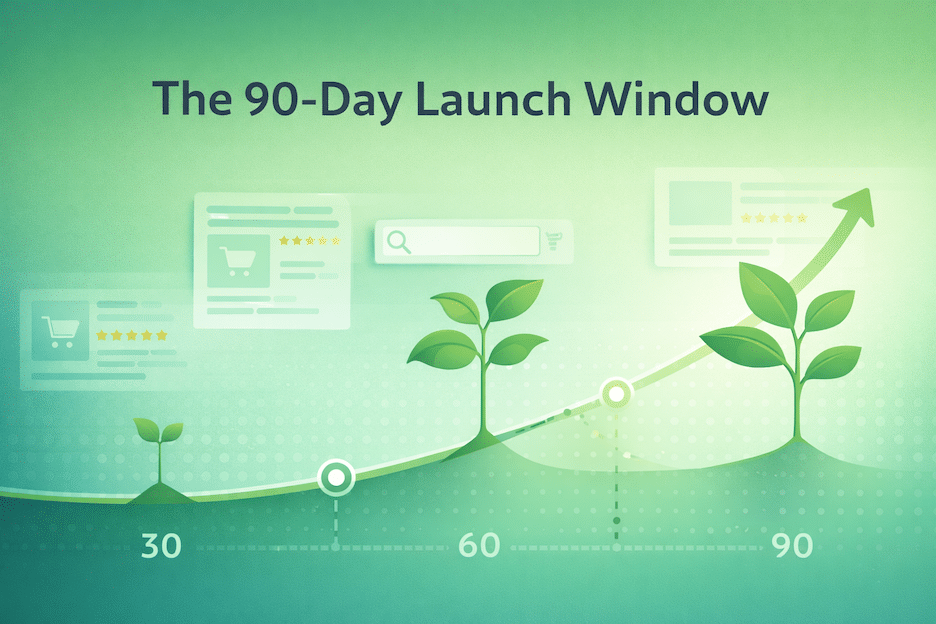The 4 Most Common Mistakes That Tank Prime Day Performance

Amazon Prime Day introduces a unique form of seasonality to the ecommerce marketplace that can challenge even the most experienced entrepreneurs. Like other more traditional holiday seasons, Amazon Prime Day sees a big surge in sales.
With that in mind, the Canopy Management team has put together a list of four factors that you’re going to want to consider when getting ready for a tent pole ecommerce event such as this.
Every seller is constantly on the lookout for ways that they can level up their business. One of the biggest levers that Amazon sellers can pull involves inventory.
Like other seasonal sales events, managing Prime Day stock can present a significant challenge. What’s particularly frustrating to sellers is the fact that the main two problems are mirror images of each other.
Underordering of your top products can lead to early stock outs, causing you to miss out on the Prime Day sales opportunity. Overstocking, in anticipation of high demand, can leave you with excess inventory post-event. As you’re well aware, Amazon’s increased storage charges can spell disaster for these stock overages.
At the same time, many of you might have multiple products that are trending upwards on Amazon. Miscalculating a single Amazon product is bad, however, if you’re selling multiple products, the chances that you’re a big winner (or loser) are multiplied!

1. Ignoring Amazon’s Volatile Marketplace Trends
Every Amazon Prime Day brings a new set of trending products. Successfully capitalizing on these trends can significantly enhance your Prime Day sales. However, mismanaging trending stock carries its own risks.
If you’re slow to stock up on a trending product, you might miss its peak demand period. Conversely, overstocking a trend-based product can leave you with unsold stock if the trend winds down post Prime Day.
Keeping a pulse on market trends leading up to Prime Day is vital. Using market research tools and following consumer behavior patterns allow you to identify emerging trends early. An agile inventory management strategy lets you respond swiftly to these trends, maximizing your Prime Day sales potential.
2. Overstocking: Amazon Storage Fees are Soaring
Amazon Prime Day is a retail event of immense proportions. Anticipating a spike in demand, sellers may be tempted to overstock. However, overstocking can quickly turn into a liability if the demand is overestimated, leading to surplus inventory.
Excess stock ties up capital that could have been allocated to other aspects of your business. More significantly, if you’re using Amazon’s FBA centers, excess inventory affects your overall IPI (inventory performance index) score. If you have too much inventory in Amazon’s fulfillment centers, Amazon will reduce your inventory capacity limits. You’ll also accrue additional storage fees, impacting your operational expenses.
There are many different strategies that Amazon sellers can implement to prevent overstocking.
Here are a few of the most important:
- The massive growth of artificial intelligence and data modeling are helping everyone make better, more informed ordering decisions. Use AI’s capabilities to establish more sophisticated ordering schedules.
- Maintain a healthy balance between on-hand inventory and sold inventory. (Keep on hand sufficient FBA inventory to cover 30 to 60 days of your expected sales)
- If you’re running Amazon PPC ads, raising your keyword bids to help you get more eyes on your product is a good way to stimulate sales.
- If you’re able to, keeping a percentage of your product stored with a more local, third-party logistics (3PL) company and considering fulfillment by merchant (FBM) can be a difference maker.
- Run promotions. Coupon codes, buy-one-get-one deals, or steep discounts (while normally not ideal) can sometimes be less economically impactful than incurring Amazon’s rising storage fees.

3. Stockouts: Deadly on Prime Day
While overstocking is a risk, understocking – leading to stockouts – can be equally detrimental, especially on Prime Day. A stockout will directly affect your bottom line. However, the implications of understocking on Prime Day go beyond just missed sales.
Amazon’s algorithm favors readily available items, so stock outs can cause your product listings
to drop in search rankings. This decline harms your product visibility and, consequently, your future sales. Plus, frequent stockouts can tarnish your reputation among Prime Day shoppers, leading to a loss of trust and loyalty.
Here are few strategies that will help you make sure you don’t run short of product:
- Take the time to set up safety stock level thresholds. Then, monitor your stock levels so that they don’t fall below the level you’ve identified as critical.
- Keep a close relationship with your supplier. Know their lead time, and allow them the time to produce products before seasonal spikes. Take the time to build and nurture relationships with your suppliers — it’ll pay off over and over in a myriad of ways.
- Tracking seasonal sales velocity is critical. When forecasting products that don’t have a consistent cadence, pay attention to historical data and specific niche growth.
- Know your reorder point and pay attention to your restock report in Seller Central
- Ecommerce software tools have evolved dramatically. Use them to manage your inventory, and anticipate the seasonal spikes and fluctuations in your sales.

4. Underutilizing Analytical Tools
Amazon’s inventory management is a marvel of modern logistics. Amazon carries a vast array of products, and managing inventory levels for these items requires a balance between avoiding stockouts (which would lead to lost sales and unhappy customers) and avoiding overstocking (which would tie up capital and occupy valuable warehouse space).
That’s why Amazon employs complex algorithms and predictive analytics to forecast demand accurately and maintain optimal inventory levels. They analyze historical sales data, consider current market trends, and even factor in variables like the weather and holidays.
As ecommerce sellers, it’s important that you take advantage of the same strategies (and tools) that Amazon has used to get to the top of the online-selling pyramid.
Inventory management is a vital part of Amazon selling, and complementary software tools have become a cheat code that can help you manage your inventory more efficiently. Below are some of the best tools available in the market:
Helium 10
Helium 10 is a comprehensive Amazon seller tool that includes inventory management features. Its inventory management tool, aptly named “Inventory Protector,” allows you to set limits on how many items of your product can be purchased in a single order, which can prevent stockouts.
Jungle Scout
Jungle Scout is another popular tool among Amazon sellers that also provides inventory management. Its feature, the Inventory Manager, provides forecasting and inventory planning tools that help prevent stockouts and overstocking.
RestockPro
This is a tool specifically designed for inventory management. RestockPro offers inventory tracking, supplier management, restock forecasting, and profit analytics. It also has the feature to predict when you should reorder stock based on lead times, sales velocity, and on-hand inventory.
Cash Cow Pro
This tool offers real-time inventory tracking and alerts you when it’s time to reorder products. It also provides analytics that can help you understand the profitability of each product you sell.
SellerCloud
SellerCloud is an integrated ecommerce management platform that includes robust inventory management features. Its tools allow you to track product quantities, manage kits and bundles, track serialized inventory, and set automatic restocking alerts.
Forecastly
Forecastly simplifies the process of managing inventory by offering predictive analytics for demand planning, which helps reduce stockouts and increase profit margins.
Inventory Lab
This tool offers real-time inventory tracking and management, profitability analytics, and accounting integration, making it a complete solution for Amazon inventory management.
SellerActive
SellerActive offers a range of inventory management features including automatic restocking, product bundling, and synchronized listings across multiple platforms.
When choosing an inventory management tool, consider factors like your budget, the size and complexity of your inventory, integration with other systems you use, and the specific features you need.
The best tool will vary depending on your individual needs and business situation. Remember, the main goal is to avoid stockouts and overstocks, keep storage costs low, and ensure a smooth operation for your Amazon store.

How the Pros Handle Prime Day
Managing your Amazon channel is a massive challenge, especially before, during and after tentpole events like Prime Day. This leaves very little time for staying ahead of the latest trends on Amazon, let alone mastering analytics tools.
This is one of the core reasons why many brands choose to bring in outside help from people who specialize in Amazon. Amazon agencies not only have the historical experience that comes from running successful Prime Day campaigns over the years, they’ve also seen how Prime Day and other major sale events work in a wide variety of product categories, from toys to electronics and everything in between.
Likewise, when it comes to inventory management, this same rich history helps inform their ability to advise sellers on exactly when to order inventory, and how much of it will be optimal. Similarly, if you’ve also hired an agency to manage your PPC campaigns, they will be able to coordinate internally to further optimize both inventory amounts and critical PPC decisions.
To get inside advice from one of our Prime Day veterans here at Canopy Management, fill out our contact form here.


